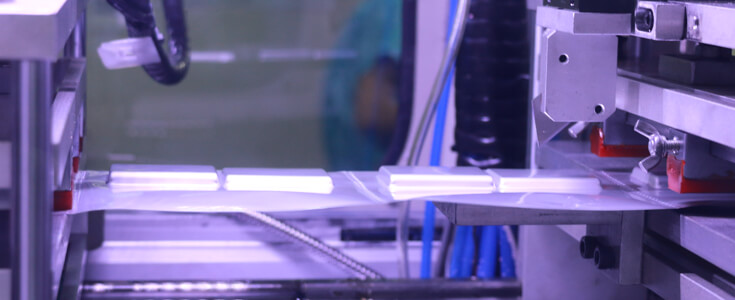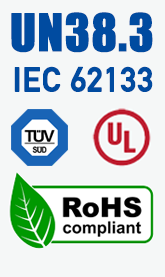
Handing Precautions & Guideline
Li Polymer Battery Charge Current-1
Our Note
The customer is requested to contact us in advance, if and when the customer needs other applications or operating conditions than those described in this document.
Additional experimentation may be required to verify performance and safety under such conditions.
We will take no responsibility for any accident when the cell is used under other conditions than those described in this Document. We will inform, in a written form, the customer of improvement(s) regarding the proper use and handling of the cell, if it is deemed necessary.
Li Polymer Battery Discharging Current-2
The charging current of li polymer battery should be less than the maximum charge current specified in the Product Specification. Charging with higher current than recommended value may cause damage to cell electrical, mechanical, and safety performance and could lead to heat generation or leakage.
Li Polymer Battery Charging voltage
Charging shall be done by the voltage less than that specified in the Product Specification (4,2V/cell). Charging beyond 4,25V, which is the absolute maximum voltage, must be strictly prohibited. The charger shall be designed to comply with this condition. It is very dangerous that charging with a higher voltage than maximum voltage may cause damage to the cell electrical, mechanical safety performance and could lead to heat generation or leakage.
Li Polymer Battery Charging Temperature
The battery shall be charged within a 10°C~45°C range in the Product Specification.
Prohibition of Reverse Charging
Reverse charging is prohibited. The cell shall be connected correctly. The polarity has to be confirmed before wiring, In case of the battery is disconnected, the battery cannot be charged. Simultaneously, reverse charging may cause damage to the cell which may lead to degradation of cell performance and damage cell safety and could cause heat generation or leakage.
Li Polymer Battery Storage
The battery shall be discharged at less than the maximum discharge current specified in the datasheet. High discharging current may reduce the discharging capacity significantly or cause over-heat.
Li Polymer Battery Discharge Temperature
The battery shall be discharged within -20°C~60°C range specified in the Product Specification.
Li Polymer Battery Over Discharging
LiPo Battery would be at an over-discharged state by its self-discharge characteristics in case the battery holds for a long time. To prevent over-discharging, the battery shall be charged periodically to maintain between 3.6V and 3.9V. Over-discharging may cause loss of cell performance, characteristics, or battery functions. The charger shall be equipped with a device to prevent further discharging exceeding a cut-off voyage specified in the Product Specification. Also, the charger shall be provided with a tool to control the recharging procedures as follows: The cell battery pack shall start with a low current (0.01C) for 15-30 minutes; I .e.-charging, before fast charging starts. The rapid charging shall be started after the (individual) cell voltage has been reached above 3V within 15-30 minutes that can be determined with the use of an appropriate timer for pre-charging. In case the (individual) cell voltage does not rise to 3V within the pre-charging time, then the charger shall have functions to stop further charging and display the cell/pack is an abnormal state.
Handling of Li Polymer Battery
The battery shall be storied within -10°C~45°C range environmental condition, If the battery has to be stored for a long time (Over 3 months), the ecological health should be; Temperature: 23±5°C. Humidity: 65±20%RH, The voltage for long time storage shall be a 3.6V~3.9V range.
Notice Li Polymer Battery Body
Since the battery is packed in the soft package, to ensure its better performance, it’s imperative to handle the battery carefully; The soft aluminum packing foil is very easily damaged by sharp edge parts such as Ni-tabs, pins, and needles.
Don’t strike the battery with any sharp edge parts;
Trim your nail or wear a glove before taking battery;
Clean worktable to make sure no sharp particle;
Don’t bend or fold sealing edge;
Don’t open or deform folding edge;
Don’t turn tab;
Don’t fall, hit, turn battery body;
Short terminals of the battery are strictly prohibited, it may damage the battery;





